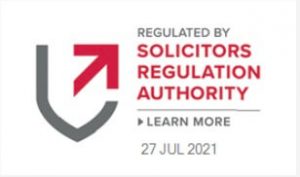
A shareholders’ agreement is a great way to regulate the relationship between shareholders and directors and set out shareholder rights and restrictions and to help prevent misunderstandings and potential disputes. It is a private document so sensitive provisions can be kept between shareholders i.e. it’s not filed at companies house.
Who needs a Shareholders’ Agreement?
A company with more than one shareholder can benefit from a Shareholders’ Agreement.
Some family-run businesses assume they don’t need a formal agreement because they believe disputes can be resolved informally. However, disagreements- especially in family businesses- can escalate quickly. Having a clear agreement in place provides certainty and helps prevent conflicts from damaging the business.
What goes into a Shareholders’ Agreement?
A shareholders’ agreement is a great way to regulate the relationship between shareholders and directors and set out shareholder rights and restrictions. Here are some examples of provisions we discuss with clients.
Restrictive Covenants
Purpose: Place restrictions on how shareholders can act in order to protect the company.
A restrictive covenant clause can prevent current and departing shareholders from setting up in competition with the company, joining a competitor, or taking key clients and employees with them when they leave.
This protects the company and, if breached by a shareholder, can be a trigger for a compulsory transfer of shares.
Share Transfers
Purpose: To clarify the rules regarding the transfer of shares.
Compulsory share transfer provisions govern what happens to shares in scenarios such as the death of a shareholder, a bankruptcy event, breach of the restrictive covenants or if they leave the business (useful for employee shareholders).
Without these rules, there is no way to force a shareholder to give up shares.
Pre-emption rules can also be included to allow existing shareholders right to the shares of a selling shareholder before a third party is brought in – after all, we all like to choose who we are in business with. These pre-emption rules can be a vital default position and should include how shares are valued as well.
Drag along and Tag along
Purpose: To protect both minority and majority shareholders
Including ‘drag along’ provisions in a shareholders’ agreement ensures that minority shareholders cannot object to a sale of the company if it is backed by the majority of shareholders. This prevents businesses from coming to a standstill during important decision-making processes and helps to streamline the sales process.
Conversely, ‘tag along’ provisions protect minority shareholders from being sidelined or treated unfairly during a sale. Tag-along rights provide that minority shareholders are entitled to sell their shares at the same price as majority shareholders.
Valuation
Purpose: Establishes a way to determine the value of shares in case of a sale or exit.
The inclusion of a valuation clause can help to prevent disputes as to the price of shares in the event of a sale or the exit of a shareholder. It may be decided that the fair value of a share should be calculated by independent valuers, helping to keep the process fair and objective, or there may be a formula for share valuation. This is certainly something to be kept out of the public eye and put in a shareholder’s agreement.
How can Bhayani Law help?
It can be difficult to know where to start when it comes to adopting appropriate provisions for your business and no one company has the same needs.
For advice on whether or not a shareholders’ agreement is a necessity for your business, whether your current agreement is up to scratch or discussion of the types of provisions that might help you, reach out to the experts at Bhayani Law on 0333 888 1360 or email hello@bhayanilaw.co.uk for advice.






